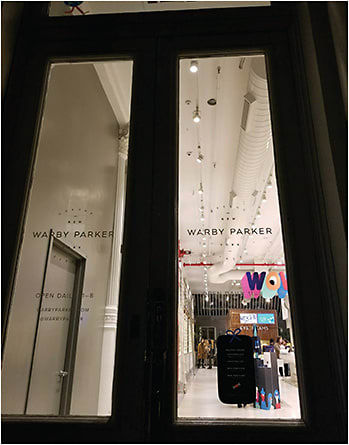
For retailers of all shapes and sizes, the overall U.S. plano sunwear business has been a mixed bag.
For the year ending June 2017, U.S. sales of plano sunwear inched up 1.9% from 2016. But challenges ranging from a damaging hurricane season to economic and political uncertainty around issues such as healthcare reform and tax reform have muted growth, says Steve Kodey, senior director of industry research for The Vision Council.
“What’s more, the changing retail landscape in the U.S.—with a record number of brick-and-mortar retail stores closing—has changed the way consumers shop for and buy plano sunglasses, presenting a challenge for many suppliers,” he notes.
There are a few bright spots, however.
According to the EB 2017 Market Trends Study, 43% of ECPs name Rx sunwear as their fastest-growing category. Plus, the high end of the U.S. plano sunwear market is having a halo effect on the category, “driving growth for the entire market,” Kodey says.
Fueling business are sales of premium, high-end sunwear, as well as sports frames, and sunwear with technology-rich features such as blue-light filtering lenses, free-form lenses, and 8-base curve technology.
Sunwear is also benefiting from broader retail distribution and a growing base of younger devotees.
“While sunglasses have increasingly become key accessories, more fashion retailers are entering the market and offering stylish sunglasses,” according to a Euromonitor International report on U.S. spectacle sales.
PLANO SUNWEAR, BY THE NUMBERS
#1
The Biggest Retail Channel:
Sunglass specialty stores such as Sunglass Hut and Solstice, with 40.5% of sunwear business at retail, are up 3.3% year over year.
#2
The Second-Largest Channel:
Grocery, convenience, and mass merchants, accounting for 17.4% of the plano sunwear business, with year-over-year sales down 0.1%.
#3
The Third-Biggest Retail Channel:
Better department stores and specialty stores—Bloomingdale’s, Dillard’s, Macy’s, Neiman Marcus, Nordstrom, and Saks Fifth Avenue—accounting for 13.4% of the plano sunwear business, with sales down 1.9% from 2016.
The ECP Channel: Plano sunglasses sold through independent ECP locations accounted for 1.2% of all plano sunglass units sold and 3.7% of all plano sunglass sales revenue during the 12-month period ending September 2017.
Inside Warby Parker

A recent visit to a Warby Park store in Manhattan offers a glimpse into the online retailer’s in-store strategies for sunwear merchandising and marketing.
And while a single store in a chain—Warby Parker currently counts 70—is never indicative of an overarching vision or strategy, here we provide a simple secret shopping snapshot of how the online-turned-multichannel merchant pursues the plano sunwear business.
Overall Strategy:
“Warby Parker was founded with a rebellious spirit and a lofty objective: to offer designer eyewear at a revolutionary price, while leading the way for socially conscious businesses,” according to the company website.
Quick Store Impression:
An offbeat environment fashioned like a library to showcase its affordable, private-label-only eyewear, including sunwear.
Plano Sunglass Price Range:
About $95 to $145.
Average Plano Sunglass Price Point:
About $95, a sales associate says.
Sunwear Focus:
Warby Parker’s sunwear assortment was showcased on eight shelves, offering both plano and Rx lenses, in acetate, titanium, and mixed-metal frames. (For comparison’s sake, the optical assortment took up 15 shelves.)
Frame styles included cat-eye, square, rectangular, and round shapes, with names like Nancy, Reilly, and Piper. The mix included pricier “archive edition” sunwear, such as the Webster frame, starting at $275 for a polarized Rx lens.
Sunglasses were displayed on a floor-to-ceiling bookshelf unit alongside two shelves of weathered-looking books from authors ranging from Truman Capote to Kazuo Ishiguro, as well as a handful of new books—for sale—like Zadie Smith’s “Swing Time.”
Rx Sunwear Available?
Yes.
Price Range for Rx Sun Lenses?
About $175 to $255.
Visual Merchandising:
Warby Parker’s library-style merchandising, dotted with a few chairs, is one expression of an interactive, service-driven in-store environment.
An eye exam area served as a focal point of the store, along with a photo booth where customers can take snapshots of themselves wearing various glasses to post to social media.
Accessories, such as foldable eyeglass cases, cleaning kits, and gift cards, were featured on a dedicated shelf.
Advertising + Marketing M.O.:
With a minimalist store environment, largely free of point-of-purchase materials and signage, Warby Parker let its services and quirks—the eyewear exam station, books, photo booth, and a museum-like display case featuring the Warby Parker timeline—tell its marketing story.




